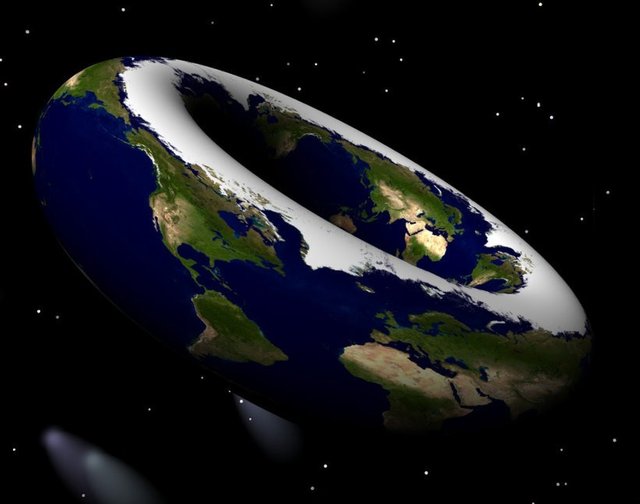Pretty much everything in the universe is in the shape of a sphere. Why? Simply, because gravity pulls everything inward. Gravity pulls from all sides, and eventually that force will even out and cause the resulting object to be a ball. However, there may technically be another shape that wouldn’t actually break the laws of physics, and that shape is a… donut. Yes, a donut (or a toroid) shaped planet could actually exist! However, there would be some physics that needs to be overcome in order to reach that point. Like I previously mentioned, planets are spherical because gravity pulls it inward. To get the hole at the center of a donut shaped planet, an equal outward force must be applied. One such force is centrifugal force, such as the force experienced on a merry-go-round, but that means the planet would have to be spinning extremely fast. This high speed would compensate for the outward force.

This type of planet is hypothetical, of course, but there are scientists that are studying it. Simon Lock, a graduate student from Harvard University, and Sarah Stewart, professor at UC Davis, have named this intergalactic donut a “synestia“. They also say that Earth was once a synestia. Currently, the theory for planetary formation starts with a protoplanetary disk left over from star formation, and the material congregates and eventually forms larger bodies. When two large bodies collide, they cool and become spherical. However, the pair of researchers asked the question, “What if the resulting body spun extremely quickly?” Take the generic example of two figure skaters. Figure skaters are often used in physics classes because they demonstrate the concept of angular momentum very well. When a figure skater is spinning rapidly with her hands close to her, she can extend her arms to slow down. When a pair of figure skaters are spinning, they can join together and add their angular momentums. Replace the figure skaters with planets, and this is the core of what Lock and Stewart wanted to study. According to Stewart, “We looked at the statistics of giant impacts, and we found that they can form a completely new structure.”
Furthermore, this paved the way for a new explanation on how the Moon originated. When Earth was (hypothetically) a synestia, the Moon was simultaneously forming inside of it. According to Stewart, “The moon is chemically almost the same as the Earth, but with some differences. This is the first model that can match the pattern of the moon’s composition.” The problem with studying synestias is that they don’t last very long. They’re thought to last only hundreds of years, which is very short in astronomical terms. For that reason, it’s hard to detect them in the observable universe. However, scientists are hopeful, and maybe one day we can alter the current theory of planetary formation to add synestias!
